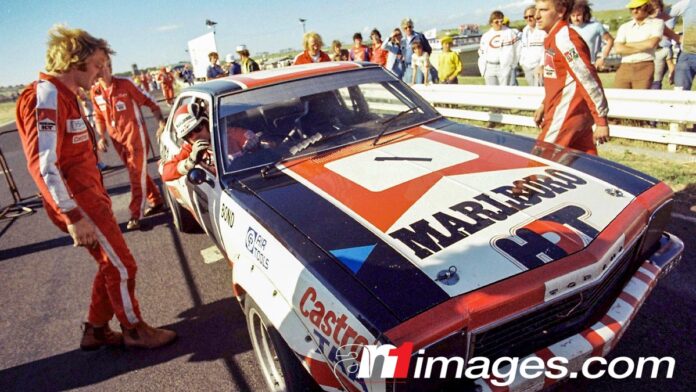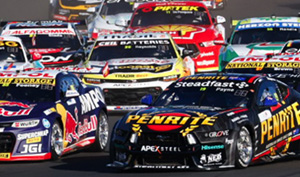WINNING any Supercars race is hard enough; doing so from last place is a next-level feat.
Larry Perkins and Russell Ingall’s victory in the 1995 Tooheys 1000 is rightly lauded as an epic feat, one we recapped earlier this year with a live blog reliving the day.
Another is Craig Lowndes’ effort in the second leg of the inaugural Adelaide 500 in 1999 – although the record books show he won the event from pole, as the two legs comprised a single race…
One victory that flies under the radar was earnt by Colin Bond in his final start for the Holden Dealer Team.
Much like Perkins and Ingall’s effort at Mount Panorama almost two decades later, Bond started near the front of the field but found himself at the tail of the field by the end of the opening lap.
As Steve Normoyle wrote for a feature in Issue 399 of Motorsport News in 2010, Bond didn’t stay at the bottom of the lap charts for long…
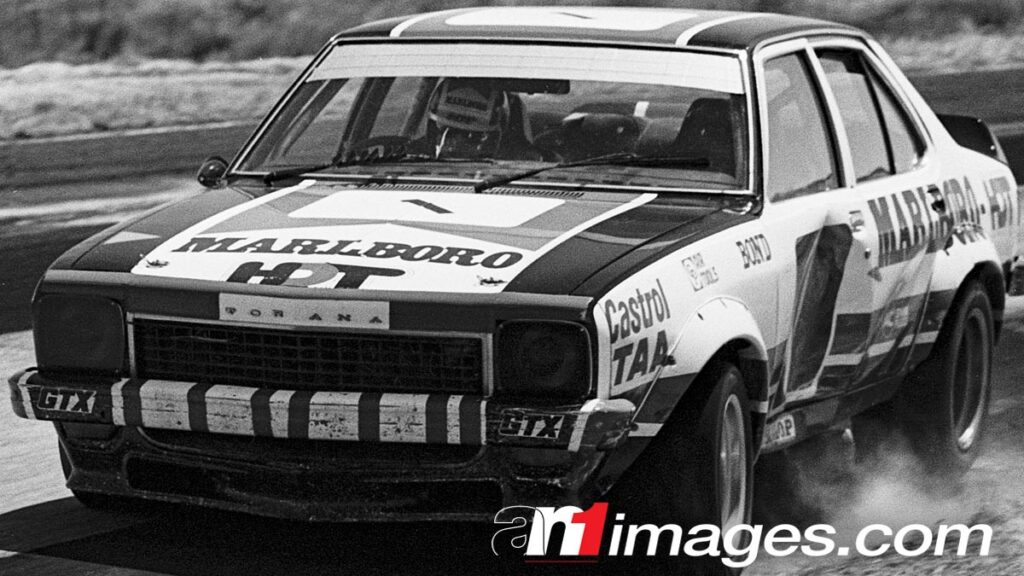
The V8 Supercar Championship Series runs from February right through until December, with all events (outside of the Albert Park Australian Grand Prix races) counting for championship points.
But it wasn’t always like this.
In fact, it mostly wasn’t like this. Through most of the 1970s, all of the ‘80s, and right up until 1998, the championship was over by July or August, with the last of the sprint rounds for the year.
The endurance races that followed weren’t part of the championship. Instead, the enduros formed a separate series, which was a manufacturers’ championship – variously titled Australian Championship of Makes or Australian Manufacturers’ Championship, or simply the ‘Manchamp’, as it was commonly known.
But in 1976 everything changed. CAMS decided to experiment with a season-long Australian Touring Car Championship running in tandem with the Manchamp. Every race except Bathurst would count for championship points.
Since the Manchamp always ended with a 500km race at Phillip Island, the Island would also wrap up the new, expanded ATCC. It was to be the first visit to Phillip Island in the ATCC’s history.
As far as the driver’s title was concerned, however, the ‘Regent Motors Rover 500K’ at Phillip Island was a dead rubber. Allan Moffat had sealed the deal with victory in the Surfers Paradise 300 in his Falcon XB GT a month earlier, relieving him of the need to contest the final at Phillip Island – a circuit for which the Ford driver felt little fondness after a nasty crash there in 1973.
There was still the Manchamp to be won, but the now-privateer Moffat felt little obligation to help out a manufacturer which had shut up shop on him three years earlier as Ford withdrew from the sport (that ’73 crash at the Island for Moffat also happened to be Ford’s last race before it pulled out).
For Holden, though, and the factory Holden Dealer Team in particular, this was a chance to extract some final glory from a season that really hadn’t gone to plan.
It had been a lean year for the HDT. Apart from getting beaten in the ATCC by the solitary Moffat Falcon, the factory Holden team was shown the way in the Sandown 400 and Bathurst 1000 by the respective privateer Torana entries of Peter Brock and Bob Morris.
With Moffat absent from Phillip Island, Holden looked set for a big points haul that would likely get it over the line in the Manchamp title.
But it wasn’t so straightforward. There was another dimension to this contest, because points were also awarded to the lower capacity class winners.
Against a threadbare Falcon opposition of only two privateer entries, Holden was almost assured of victory in the outright battle with its fleet of a dozen Torana L34s – but if a Ford Capri got up for the under 3-litre class victory, Holden might lose the Manchamp war.
So with the lower capacity classes holding the key to the Manchamp crown, Holden found itself in the most bizarre of situations – its title chances would be enhanced if some of its regular Torana drivers switched to a different marque (as long as it wasn’t Ford) in the lower class!
So it was that Holden persuaded Allan Grice to park the Craven-Mild Torana he’d have normally raced and instead drive the Mazda RX3 he’d been running in the Amaroo Park under 3-litre series.
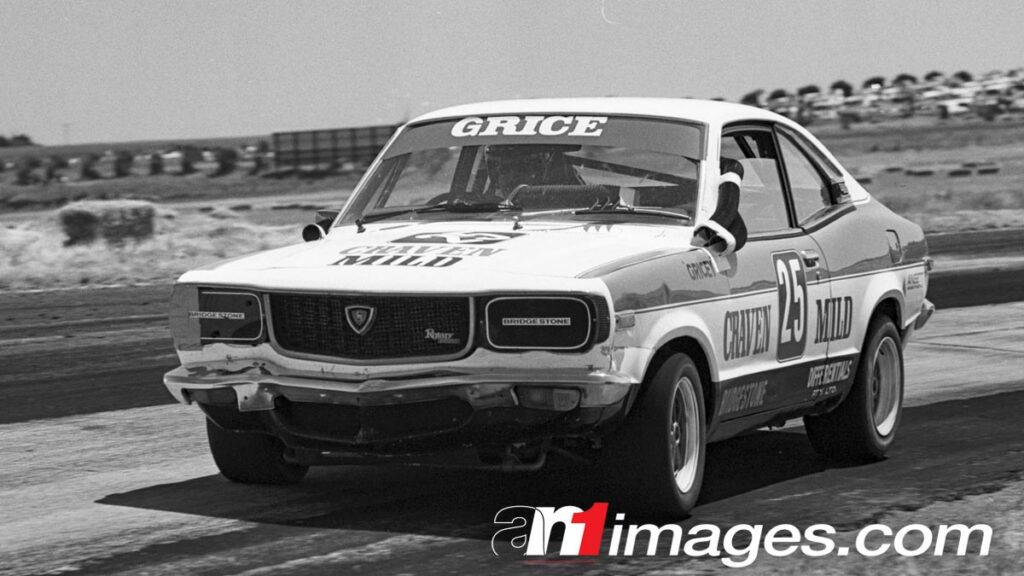
While the remaining Torana drivers did the job in the outright class, it was up to Grice to deny Ford crucial points it would otherwise have scored from a Capri victory in the under 3-litre class.
Grice had no particular affiliation Holden, and in fact viewed the HDT as no less a rival than Moffat, but on this occasion he was happy to toe the General’s line in return for some back door factory assistance for his ’77 Torana campaign.
It was a similar situation with Bob Morris, fresh from victory at Bathurst with his Ron Hodgson Motors Torana but here running his ‘Amaroo’ Triumph Dolomite. The Triumph was competing in the under 2-litre class, where Holden was hoping he might be able to take some points off the Ford Escorts …
These days there are maximum time limits imposed on driver stints in the enduros. No such restrictions back in the day; in fact, as the race was ‘only’ 500km, a co-driver was merely optional. Most of the front runners chose to go it alone, which meant a mammoth solo effort behind the wheel of close to four hours.
But Colin Bond’s day in the lead HDT Torana was nearly done within minutes of the start.
His clutch was slipping off the line, and in the chaotic getaway Bond’s car got clouted by Charlie O’Brien’s Torana. O’Brien had to pit for repairs but Bond’s car only had a crunched door.
But in the melee Bond had been seriously delayed; he was virtually last as they completed the first lap.
Today we recall famous last-to-first victories, such as the Larry Perkins/Russell Ingall Bathurst win in 1995, and the Craig Lowndes and Mark Skaife victories from the rear of the grid in the Clipsal 500.
No one remembers much about Colin Bond’s Phillip Island effort in 1976, but it was done without the help of Safety Cars – it was a pretty impressive feat by any standards.
What helped Bond that day was the notorious fragility of Group C Touring Cars in the mid-‘70s, and Phillip Island – then, as now – on a summer’s day was a fairly tough test of man and machine.
They were dropping like flies within a handful of laps. Of the 42 starters, only 20 would be still running at the end, and a lot of them would be walking wounded, many, many laps behind.
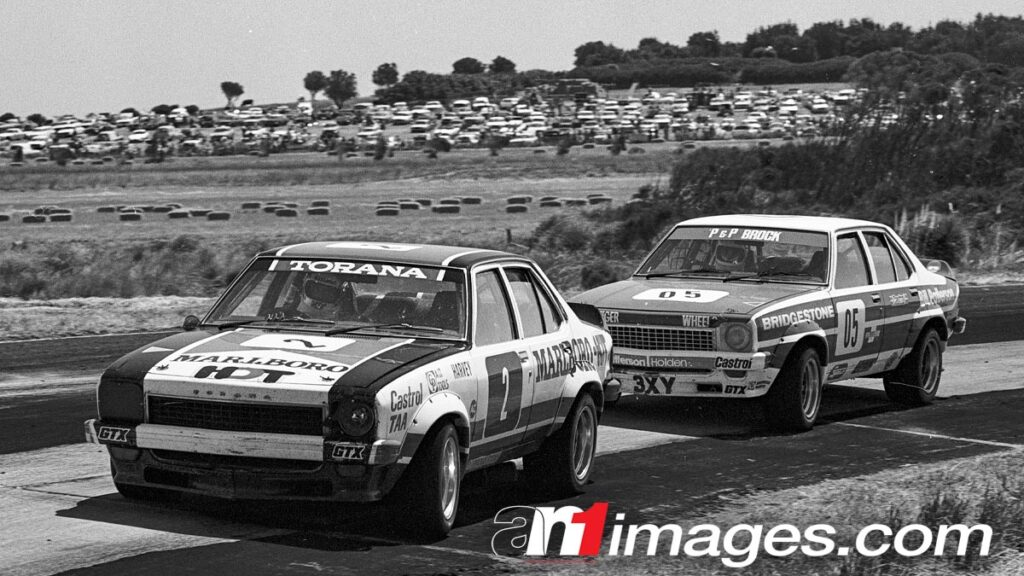
At the front, the early running was a battle between John Harvey in the second HDT Torana and Peter Brock’s Bill Patterson Motors Torana. Bond, pushing hard, was still half a minute adrift of them on lap 13, but within 17 more laps the gap was a mere 10 seconds. Bond was virtually in a class of his own.
Before long he was in the lead as Brock pitted with a flat tyre, and Harvey followed suit with a flat spotted tyre. Not long after that Harvey was back in the pits with a failed diff – one of the L34 Torana’s various Achilles’ Heels.
It was now a race between Bond and Brock. The latter had taken an oil top up at his first stop but unfortunately they’d overfilled the engine and now Brock’s car was pumping out smoke. It wasn’t affecting his pace, which in any case simply wasn’t fast enough to stay with Bond.
The HDT Torana was about half a minute ahead by the half way mark, and from there Bond was happy to hold Brock at that distance. On this day, Brock looked well beaten.
Soon it wouldn’t matter, as Brock slid off the road and smashed into a culvert. He got back to the pits but his Torana was done for the afternoon.
With the marginal threat posed by Brock now eliminated, Bond was safe. He dropped his pace by as much as six second a lap to ensure the HDT Torana made it to the flag.
Second was the man who’d joined Bond at the rear of the field on the opening lap, Charlie O’Brien. The young Queenslander’s drive had been impressive – O’Brien had lost a lot more time than had Bond at the start, but here he was three hours and 48 minutes later, trailing the winner by just 20 seconds.
But this was one of Colin Bond’s greatest victories. It was also his last with the factory Holden team. After a year (or perhaps years) of not seeing eye-to-eye with team boss Harry Firth, Bond had had enough and was leaving the HDT.
In what was easily the biggest driver ‘defection’ yet in the Holden-vs-Ford on-track battle – which in 1976 was only in its ninth year – Bond was leaving the factory Holden team to join Moffat in a new two-car factory-backed Ford team.
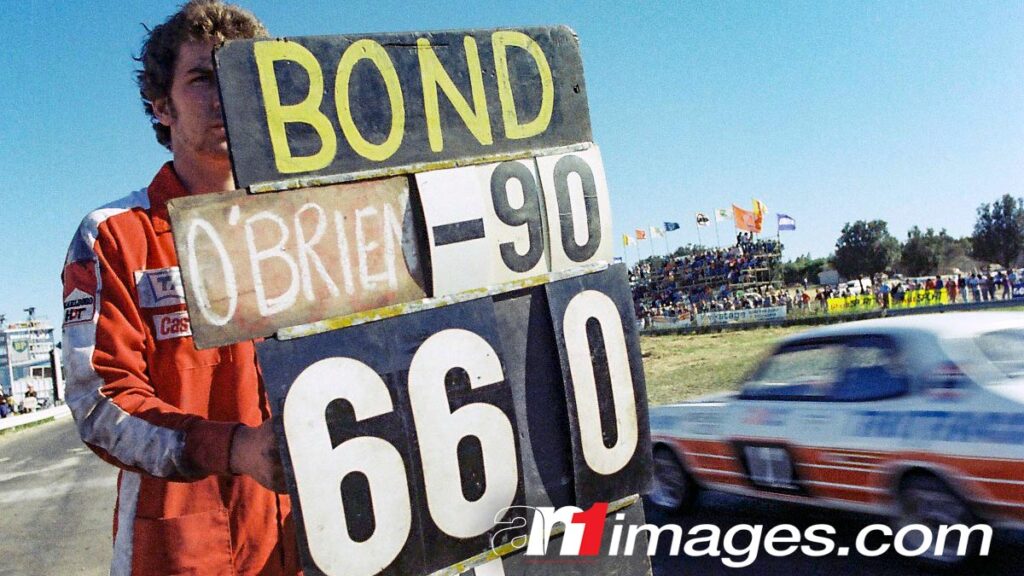
Third behind Bond and O’Brien that day was Peter Janson, making it a Holden one-two-three. Janson been lucky: after a late tyre change he had his hands full fending off a challenge from the similar car of Garth Wigston – later to become the V8 Supercar Chief Steward.
Holdens first to fourth, and another Holden driver in fifth place – but driving a Mazda. Allan Grice had enjoyed a trouble free race with his RX3 to romp home for a class win that, just as Holden had hoped, helped deny Ford the Championship of Makes crown.
Grice would be back at Phillip Island a year later, but this time with his Torana A9X – and this time to score the outright victory.
But that would be the championship’s last visit to the Island for another 13 years. At that 1977 race the track surface – which had been Phillip Island’s Achilles Heel right from the circuit’s inception – broke up horribly. Not long after the circuit was closed.
It lay dormant for years, and was only saved when Victoria secured the 500cc Australian Motorcycle Grand Prix in the late ‘80s.
With state government assistance, the track was properly resurfaced and rebuilt into the modern facility we have today.


